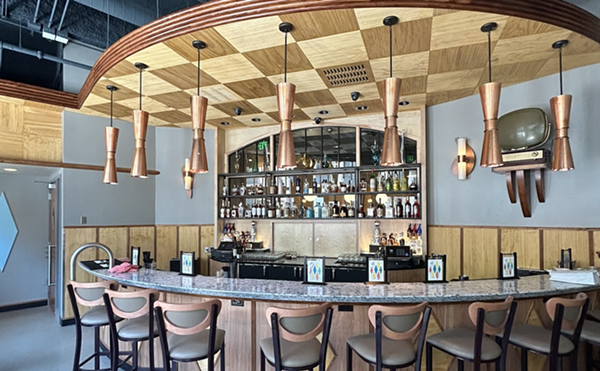Zingerman’s Roadhouse presents “unusually good American food,” declares a neon sign over the roof, in a setting that harks back to the day when weary travelers could recharge with a comforting meal by the roadside. The Roadhouse is a sprawling place with a semi-open kitchen, full bar, two dining rooms and outdoor seating.
Partner Paul Saginaw says the Roadhouse pushes the Zingerman philosophy up a notch with its offerings of artisanal, organic and handmade American foods. The steakhouse is the seventh business in the Zingerman empire, which originated with the famous gourmet deli and bakery in downtown Ann Arbor in 1982.
“We measure our success in what we contribute to our customers, employees and community,” Saginaw says. “If you push hard enough [the business] can be a vehicle for social change.”
All of the Roadhouse’s beef and pork comes from the Niman Ranch in California, where old-breed cattle roam freely. The steaks are dry-aged for five weeks, then grilled over oak (for a hot fire) and served with Tellicherry pepper jus. The beef is not like the buttery variety served in many high-end restaurants, but has a depth of flavor that you’ll want to savor, and not a hint of fat.
The Roadhouse’s eight-page menu includes a wealth of information about the foods it offers, such as this tidbit about grits from Anson Mills in South Carolina: “The corn varietals used are very flavorful old heirlooms, and the grinding is all done with stone.” We were served a promotional sample of these grits, and they were fabulously complex.
Complexity is a word that comes to mind frequently with regard to dinners at the Roadhouse. Not that the recipes are complex; it’s straightforward roadhouse fare and many of the eaters around us scarfed down hamburgers and fries. The complexity comes from the intricate, multi-layered, nuanced taste of each entrée.
My first bite into macaroni, ham and goat cheese included a taste of aged Monterey Jack cheese from the Vella creamery — “one of the last in the country to make authentic Monterey Jack the old-fashioned way,” says the menu. The Vella cheese is so good you can taste the history of cheese-making in every bite. A topping of roasted tomato sauce complements the dish perfectly.
If you have a question about something you are thinking of ordering, your server will bring you a sample. That’s how we ended up with ancho beef chili, absolutely the best chili I’ve ever eaten, with shreds of beef and black beans. The ancho peppers are grown in New Mexico and, though spicy, aren’t about fire but richness and depth — extraordinary in an everyday dish like chili.
Everything we ate and drank at the Roadhouse was terrific, from the wild salmon fillet to the robust root beer to the crusty, grainy bread (the stuff that made Zingerman’s famous), to the white chocolate bread pudding with Jack Daniels sauce.
Some tables at the Roadhouse are reserved for communal dining. Saginaw says diners are reluctant to embrace this concept, an old European tradition, but when there’s a long line at the restaurant he finds volunteers by saying, “Hey, guys, you want world peace and you won’t even eat with someone from your own community?”
Readers who have followed this column will no doubt join me in mourning the death of my co-diner. Neil Chacker contributed historical anecdotes, jokes, quotes and many a turn of phrase to my column. He died after a six-year fight with non-Hodgkin’s lymphoma. He was a socialist, a fighter for social justice, a UAW activist, an analyzer of history, a champion of trivia, a worthy opponent at Scrabble and a thoroughly excellent co-diner. He will be deeply missed as a husband, father, grandfather and friend.
Rest in peace, co-diner.
Elissa Karg dines for Metro Times. E-mail [email protected].





